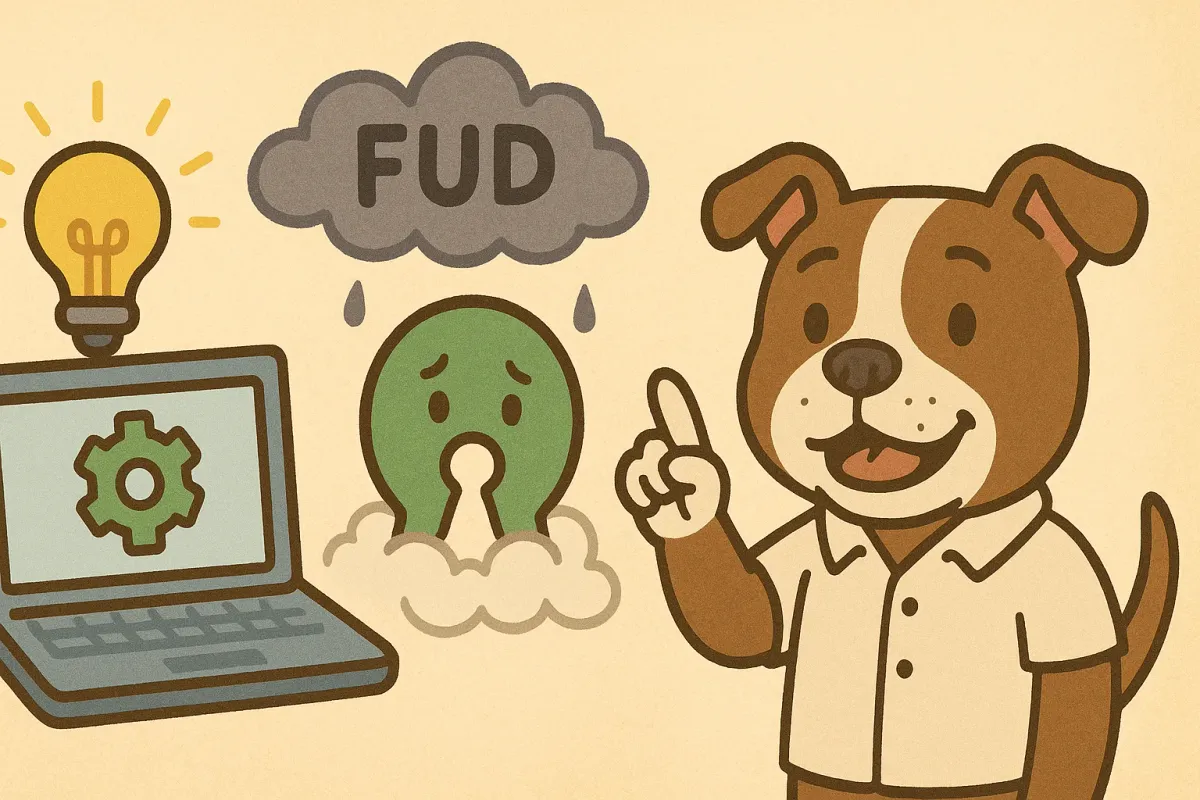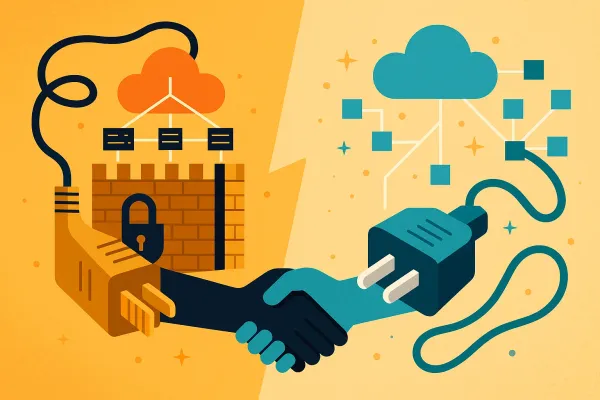A Pragmatist's Guide to Open Source Licensing: From Fear to Innovation

Every modern software product is a tapestry woven with threads of open source code. From the operating system it runs on to the libraries that power its features, OSS is the engine of innovation. Yet for many startups, product managers, and even seasoned engineers, the world of OSS licenses is a landscape of fear, uncertainty, and doubt (FUD).
The most common fear? "If we use a single open source library, we'll be forced to open-source our entire proprietary codebase."
Let's be clear: This is almost always untrue. This fear stems from a misunderstanding of one specific category of licenses. The vast majority of OSS can be used in commercial products with minimal, manageable obligations.
The purpose of this guide is to replace that fear with a clear, pragmatic understanding. We'll explore the why behind these licenses, break down the major types, and provide an actionable playbook for using OSS safely and effectively to build better products, faster.
Part 1: The "Why" - The Purpose and Spirit of OSS Licenses
OSS licenses weren't created to make life difficult for commercial companies. They were created to protect a core set of principles, primarily the freedom of users to see, modify, and share software.
The core idea is to prevent a situation where code, once shared freely, is taken by another entity, locked down into a proprietary product, and the original community is prevented from benefiting from the improvements. Licenses are the legal mechanism to enforce this spirit of collaboration and sharing. They grant you rights you wouldn't otherwise have (like the right to copy and use the code), in exchange for you agreeing to certain obligations.
Part 2: The License Families - A Practical Breakdown
Not all licenses are created equal. They generally fall into a few major families, distinguished by the obligations they place on you.
The "Do (Almost) Whatever You Want" Family: Permissive Licenses
This is the most common type of license, and it's the one that most directly proves the "we have to open-source everything" fear wrong.
What They Let You Do: You can use, copy, modify, merge, publish, distribute, sublicense, and/or sell copies of the software. You can freely mix it with your proprietary code.
What They Require: The only major requirement is attribution. You must include the original copyright notice and a copy of the license text with your distributed software. For a web application, this is often handled with an "Open Source Notices" or "Acknowledgements" page.
Commercial Risk: Very Low. These licenses are the gold standard for inclusion in proprietary commercial software. Using a permissively licensed component will never force you to open-source your own code.
| License | Key Requirement | Obligation to Open-Source Your Code? |
|---|---|---|
| MIT | Attribution | No |
| Apache 2.0 | Attribution, State Changes | No |
| BSD | Attribution | No |
The "Share and Share Alike" Family: Copyleft Licenses
This is where the fear originates, but the reality is nuanced. The key is understanding what triggers the "sharing" requirement.
Weak Copyleft
These licenses strike a balance, requiring you to share your changes to the licensed code itself, but not the code that uses it.
The "Library" Exception: Think of an LGPL component as a tool in your toolbox. If you use the tool (the library) to build your house (your application), you don't have to give away the blueprints to your house. If you modify the tool itself to make it better, you only have to share your improvements to that tool.
What They Require: The copyleft provision is triggered by modification of the library itself. If you simply use an LGPL library in your commercial application (by dynamically linking to it), you have no obligation to release your source code. If you modify the library, you must make the source code of your modified version of that library available.
Commercial Risk: Medium. It's generally safe to use LGPL libraries as long as you are dynamically linking and not modifying them.
Strong Copyleft
This is the category where caution is required, as it's the source of the "viral" license myth.
When is the Obligation Triggered? The obligation to share your source code is triggered only when you combine the GPL code with your code into a single, derivative work and then distribute that work to customers.
- Distribution is Key: Using a GPL-licensed compiler or build tool internally does not require you to open-source your code, because you are not distributing the GPL tool to your users.
- Linking: If you link a GPL library into an application that you then sell or give to customers, the entire application is considered a derivative work, and you must provide the full source code under the GPL.
Commercial Risk: High. This is the one area where the fear is warranted. Avoid using GPL libraries in your core, distributed proprietary product. Use extreme caution with AGPL for any customer-facing service.
The AGPL - A Special Case for SaaS: The Affero GPL (AGPL) was created for web applications. The GPL is triggered by distribution. Since SaaS users interact over a network and don't receive the software, the AGPL closes this "loophole." If you use an AGPL component in a service available over a network, you must make the source code of the entire service available.
| License | Key Requirement | Obligation to Open-Source Your Code? |
|---|---|---|
| LGPL | Share modifications to the library | No, unless you modify the library itself. |
| MPL 2.0 | Share modifications to the licensed files | No, only the modified files. |
| GPL | Share source of entire derivative work upon distribution | Yes, if you combine and distribute it. |
| AGPL | Share source of entire work if used over a network | Yes, if used in a SaaS-like manner. |
A Note on License Compatibility
You cannot simply mix code from different licenses. Some licenses are "incompatible" with each other. For example, the popular Apache 2.0 license is incompatible with GPLv2. This means you cannot combine code from an Apache 2.0 project and a GPLv2 project into the same program. GPLv3 was specifically designed to be compatible with Apache 2.0, highlighting how subtle these issues can be. This is a key reason why automated license scanning is so important.
Part 3: The New Kids on the Block - Source-Available & Business Source
Reacting to large cloud providers profiting from OSS projects without contributing back, a new category of licenses has emerged. These are not technically Open Source according to the official definition (by the Open Source Initiative - OSI), as they restrict usage.
The Concept: They look like open source, but with a key restriction. They typically allow free use for most purposes, but forbid you from using the software to create a competing commercial offering.
Example (BSL): A company releases its database under the BSL. You can use it for free to power your e-commerce site's backend. You cannot use it to launch a new "Database-as-a-Service" product that competes with the original company. After a set period (e.g., 3-4 years), the BSL license automatically converts to a true, permissive OSS license like Apache 2.0.
Commercial Risk: Medium to High. You must read the license carefully. It is safe to use as an end-user of the technology, but you cannot build a competing service with it. This is a purely commercial restriction and has nothing to do with being forced to open-source your application code.
Part 4: A Practical Playbook for Your Company
Here is how to move from theory to practice and build a robust compliance process.
Create an Inventory (Know What You're Using)
You can't comply with licenses you don't know you have.
Action: Use a Software Composition Analysis (SCA) tool. Many platforms like GitHub, GitLab, and dedicated tools (Snyk, FOSSA, etc.) can scan your codebase and its dependencies to create a Bill of Materials (BOM) and identify all licenses.
Define a Policy
Create simple, clear rules for your team.
Example Policy:
- Permissive (MIT, Apache 2.0, BSD): Pre-approved for all use cases.
- Weak Copyleft (LGPL, MPL): Requires review by the tech lead. Approved for dynamic linking only. Any modifications to the library require a full legal review.
- Strong Copyleft (GPL, AGPL): Prohibited from being included in our distributed product or SaaS backend. Use as a command-line tool or internal service is acceptable but requires documentation.
- Source Available (BSL, SSPL): Requires review to ensure we are not a "competing" service.
Implement a Process
Integrate the policy into your workflow.
Action: Run your Software Composition Analysis (SCA) tool automatically in your CI/CD pipeline. Have it flag any new dependency that has a problematic or un-reviewed license. This prevents problems before they get merged.
Manage Attribution
Failing to provide attribution is the most common (and easiest to avoid) compliance mistake.
Action: As part of your release process, automatically generate an "Open Source Notices" file. Most SCA tools can do this for you. Include this file with your software or link to it from your website's footer.
Part 5: Beyond Compliance: Being a Good OSS Citizen
If your company relies heavily on an OSS project, simple compliance is not enough. True success comes from participating in the ecosystem. This isn't just charity; it's a strategic investment.
Contribute Back: Encourage engineers to submit bug fixes and improvements to the upstream projects you use. This directly improves the software you rely on.
Provide Financial Support: If a project is critical to your business, sponsor the maintainers through platforms like GitHub Sponsors, Open Collective, or the Tidelift Subscription. This ensures the project remains healthy and maintained.
Share Your Knowledge: Allow your engineers to speak at conferences or write blog posts about how they use the software. This builds your company's technical brand and helps attract talent.
A company that is a good OSS citizen builds a reputation as a technology leader, gets better software, and has an easier time hiring passionate engineers. It's a powerful virtuous cycle.
Conclusion
Open source licensing is not a minefield to be feared, but a system of rules to be understood. The belief that using any OSS component infects your entire codebase is a myth. By understanding that this risk is confined to a specific set of licenses (Strong Copyleft) and specific use cases (distribution of a combined work), you can operate with confidence.
By categorizing licenses, establishing a clear policy, and integrating compliance into your workflow, you can confidently leverage the power of OSS to innovate faster and build incredible products.
Move beyond fear. Understand, Comply, and Contribute.



